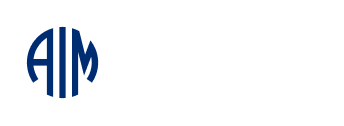
What is organisational development?
An Intentional approach for success
| 4 minute read | |

Change is something every organisation goes through. But, sometimes, a strategy is needed to ensure your organisation is changing correctly and developing towards desired outcomes.
Through constantly monitoring and adjusting elements, including culture, capability, values and relationships, an organisation can ensure it better meets its goals, is aligned to its core purpose and can continually improve.
Known as organisational development, it is a crucial activity for every organisation.
Organisational development in a nutshell
According to Perth Airport People and Culture General Manager Sandra de Kock, organisational development is a process of changing and updating your organisation to better suit its needs.
“It’s a systematic and intentional approach to achieving an organisational outcome,” she said.
“It has a desired outcome aligned to where an organisation sees itself needing to be.”
What this development involves can differ between organisations depending on their size, maturity and desired outcomes.
It can involve changing the workplace culture, developing certain workplace skills or changing internal systems.
But, for everyone, there are a few key stages.
“It starts with the diagnosis. What are we working with and what are the issues?” Ms de Kock said.
“Then you go into the solution phase. What are you going to do and is that fit for your diagnosis?
“Then you implement and, once you’ve put something in place, you evaluate how effectively – or not – that implementation has gone.
“The next step is the process of embedding; how you embed the change over a period of time.”
Ms de Kock noted, however, that the process should not stop there, as organisations would always be developing and changing as time went on.
“It’s pretty much iterative because other things arise and you go through the same process, so you just keep going round and round, hopefully, with better and better outcomes,” she said.
“Organisational development can occur intentionally or unintentionally, and I would prefer it to be done intentionally.
“There’s quite a lot of change management involved in organisational development because organisations develop whether you like it or not.”
While it can have its challenges, a workplace developing through an organisational development framework is very beneficial, both for the organisation itself and individuals.
“For an organisation, it’s about achieving your stated aims,” Ms de Kock said.
“For an individual, it’s growth and development, and a happy place of work; somewhere you enjoy going to work.”
The results of organisational development
As someone directly involved in the organisational development of Perth Airport, Ms de Kock has seen first-hand the results organisational development can deliver.
“A new chief executive officer came on board and, as often happens with new chief executive officers, they scan the environment and ask if the organisation’s strategy and values align with the shareholders’ and the desired outcome,” she said. “The determination was that no it wasn’t.”
Undertaking a comprehensive strategy refreshment, Ms de Kock said an organisational strategy was crafted with input from across the team and aligned some of the key values, which were considered necessary for the organisation to deliver on that strategy.
She said the desired culture in the organisation was also determined, ensuring buy-in from the executive and board, because culture could work against, or support, an organisational outcome.
“There’s quite a hackneyed phrase ‘culture eats strategy for lunch’, which is actually true,” Ms de Kock said.
“If you don’t have the right culture in place at an organisation, then you can guarantee that the strategy you seek to deliver is not going to be delivered, because people are not working in a way that is conductive to achieving that outcome.”
Ms de Kock said a culture map was developed and Perth Airport decided to go down a competency pathway, choosing core competencies aligned with its values and the culture map.
“What we were looking to do was to create a culture in the business where people felt empowered to think and act independently and to be very proactive,” she said.
Once the implementation stage was reached, Perth Airport ensured that individuals were rewarded in their roles based both on what they did and how they did it, including how they adhered to these values and core competencies.
Perth Airport also uses culture and engagement surveys to monitor how change is occurring and how effective it is and, so far, the strategy has worked well.
Working in partnership
AIM WA engages with organisations using a partnership model. The Institute’s work, which helps organisations diagnose their needs and then designs and implements solutions to meet those needs, is only one part of the broader organisation development strategy.
“Often we can be a valuable sounding board for the Head of People and Culture, as they weave a range of interventions into their overall strategy,” AIM WA Chief Learning and Development Officer Dr Shaun Ridley FAIM said.
Organisations vary greatly in their ability to implement an organisational development strategy.
Comprehensive workforce planning, capacity building, diversity, equity, inclusion, workplace agreements, rewards and recognition, and alignment with the overall corporate strategy all form part of the organisational development plan.
Each of these elements is central to the organisation’s ability to deliver on their ambitions for high-quality service delivery to their clients and stakeholders.
“By adopting a mindset of being a partner with the organisation, we can help them achieve a return on investment and plan for the next stage of the organisation’s development,” Mr Ridley said.






